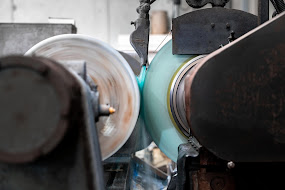Hard Chromium Plating: Clear Your Basics About This Process
Hard chromium plating is the process of depositing a thin layer of chromium on an object by vaporizing chromate and then reacting with an oxide or other material to form solid chromium. These plates are typically between 1 micron and 5 microns, depending on the specific application. Hard chrome plating is used in industry for its corrosion resistance, wear resistance, toughness, and hardness, meaning that a hard chrome coating can be very durable even under high pressure and extreme heat conditions.
With precision grinding machines and plating lines, hard chrome plating is a process that can be highly controlled. This allows for consistent plate thickness and the ability to plate any shape. With hard chrome plated parts, companies have been able to improve the quality of their products while also decreasing costs compared to other options like electroplating or painting. There are many different ways that hard chromium can be used in industry.
- Chromium is a very noble metal, meaning that there must be a lot of chromium to have a decent amount of different properties. Chrome is resistant to corrosion, water, oil, and many other environments.
- A hard chrome coating can be used in high-heat environments such as industrial furnaces and heat exchangers because it will not deplete quickly like paint or other coatings.
- It is simply easier to control the hardness of hard chrome plating due to its chemical nature compared to electroplating. The chemical nature of chromium provides more leeway for post-treatments like anodizing or plating overcoating.
- Like other alloys, the hardness of chromium can be adjusted by changing the amount of alloying elements. The most popular alloying element for chromium is nickel.
- The composition and thickness of hard chrome plating do not vary much compared to electroplated coatings, allowing for easier control of product quality.
So take advantage of hard chromium plating today!

Comments
Post a Comment